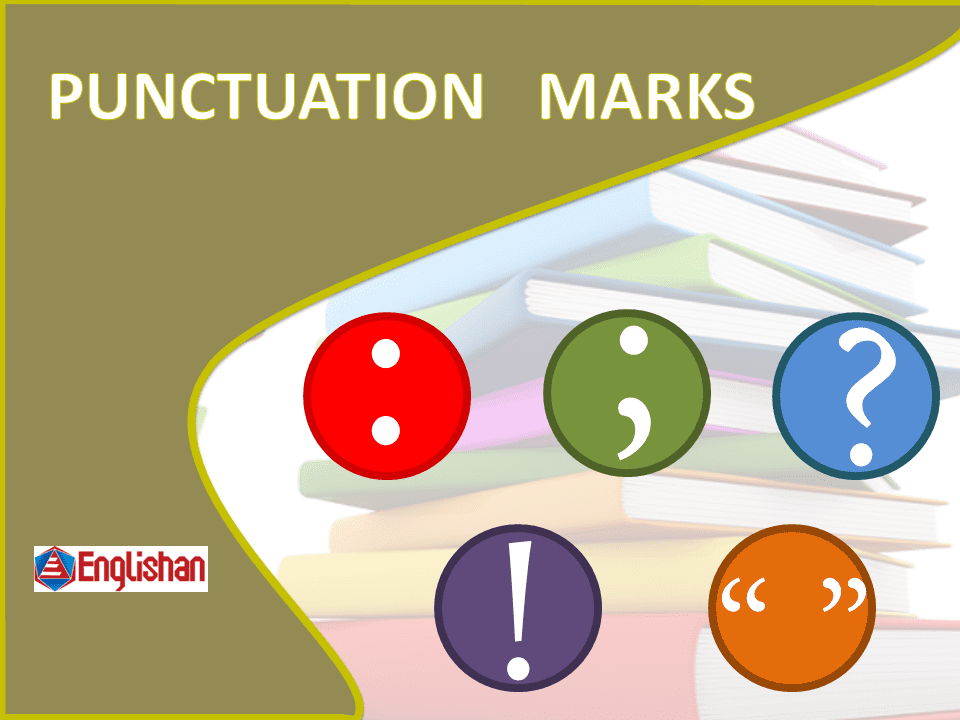Contents
Punctuation
When you talk or write, our object is to make other people understand what you means. It would depend on your ability to arrange the words in such a way as to show the correct relation between the various parts of a sentence. When you talk to a person you pause at other times long. Your face undergoes changes. Sometimes it expresses wonder, sometimes it shows your seriousness, and sometimes you put a question, to which you expect an answer. All these different emotions which you experience are expressed by facial expressions. In your written composition you achieve the same purpose by inserting stops and commas and other points.
Now, what about punctuation of a given passage? If you read a passage intelligently, you would be able to punctuate it correctly. The first thing which you must do with a passage given you for punctuation is that you should put full stop first. Then, take up the passage, again, and insert commas, semicolons, signs of interrogation and signs of exclamation.
Punctuation is derived from the Latin word punctum, which means a point. The following are principal stops, and other marks in common use:
- Full Stops or Period (.)
- Comma (,)
- Semicolon (;)
- Colon (:)
- Sign of Interrogation (?)
- Sign of Exclamation (!)
- Dash (—)
- Parenthesis ( )
- inverted Commas or Quotation Marks”………….”
Full Stop: (.)
Rule 1. The full stop is used at the end of a complete sentence. (A sentence is a group of words which makes complete sense.) A full stop is not used after an interrogative or exclamatory sentence.
Examples
- Summer days are very hot. 2: Don’t spit on the floor.
- Wordsworth was a great poet. 4. My house is not very big.
- You come late every day.
Rule 2. A full stop is placed after an abbreviation, including initials and titles.
Examples
- A.D. (in the year of our Lord)
- A.M.I.C.E. (Associate Member of Institution of Electric Engineers)
- B.A. (Bachelor of Arts)
- C.B. (Before Christ; Board of Control, British Columbia; Battery Commander)
Exercise
Abdullah Yousaf Ali was sixty years old when he joined the Lahore Islarnia College as the principal he was MA from Cambridge University he was a member of the ICS he served with the Nizam of Hyderabad he was Ilm from the university mentioned above he was frhsh is full name when written was: yousaf ali ma llm ics-frsh it was such a grand name.
Solution
Abdullah Yousaf Ali was sixty years old when he joined the Lahore Islamia College as the Principle.He was M.A. from Cambridge University. He was a member of the I.C.S. He served with the Nizam of Hyderabad. AND He was L.L.M. from the University mentioned above. He was F.R.H.S. His full name when written was: Yousaf Ali M.A., L.L.M., I.C.S., F.R.S.H. It was such a grand name.

FAQs
Here are 14 punctuation marks with short examples:
1. Period (.) – I like dogs.
2. Comma (,) – I bought apples, bananas, and grapes.
3. Question Mark (?) – What is your name?
4. Exclamation Mark (!) – That’s amazing!
5. Colon (:) – I need two things: shoes and a bag.
6. Semicolon (;) – I’m tired; I’ll rest now.
7. Quotation Marks (” “) – He said, “Hello!”
8. Apostrophe (‘) – It’s raining.
9. Parentheses (()) – I went to the store (it was fun).
10. Hyphen (-) – This is a well-known fact.
11. Dash (–) – She’s so talented – it’s incredible.
12. Ellipsis (…) – I don’t know what happened…
13. Brackets [ ] – He said, “I love [this book].”
14. Slash (/) – Do you want tea/coffee?
Here are 12 punctuation marks:
1. Period
2. Comma
3. Question Mark
4. Exclamation Mark
5. Quotation Marks
6. Apostrophe
7. Colon
8. Semicolon
9. Dash
10. Parentheses
11. Ellipsis
12. Slash
A semicolon (;) is used for two main reasons:
1. To connect two related sentences without using “and” or “but.”
Example: I like pizza; I don’t like pasta.
2. To separate items in a list when the items are long or have commas in them.
Example: We traveled to New York, USA; London, England; and Tokyo, Japan.
It helps link ideas more closely than a period.
You May Also Like
- Punctuation Worksheets with Answers in English
- Present Indefinite Tense Worksheets and Exercises
- Present Continuous Tense Worksheets
- Modals Verbs Exercises with Answers in English
- Road Signs and Traffic Signs with Meanings



